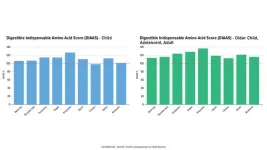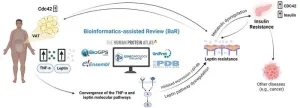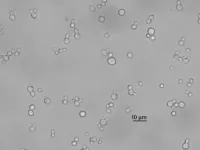(Press-News.org) A recent study led by researchers from the University of Illinois, including Dr. Hans Stein, confirms that a wide range of pork cuts, Italian hams, and sausages offer excellent protein quality. The study, published in JSFA Reports,1 utilized the Digestible Indispensable Amino Acid Score (DIAAS) method to measure protein quality, finding that all tested pork products, except one, achieved a DIAAS greater than 100, qualifying them as "excellent" protein sources for children, adolescents, and adults.
The researchers evaluated various culturally relevant cuts of pork, such as back ribs, shoulder butt, tenderloin, Italian hams like Coppa, prosciutto, speck, and sausages like chorizo, Italian sausage, and bratwurst. Across the board, these pork products demonstrated superior protein quality, with prosciutto having the highest DIAAS for all age groups. These findings underscore the high nutritional value of whole pork carcass utilization, ensuring that every part of the animal offers high-quality protein for consumers.
Pork as a Superior Protein Source
The DIAAS method, endorsed by the Food and Agriculture Organization (FAO),2 evaluates the digestibility and quality of protein, considering the amino acid composition and the body's ability to absorb these nutrients. The study found that all pork products tested had no limiting amino acids and delivered high-quality proteins essential for growth, development, and muscle maintenance.
"This study highlights the excellent protein quality found in pork cuts, Italian hams, and sausages, providing culturally relevant options for people of all ages," said Dr. Hans Stein, co-author of the study. "These products offer an exceptional balance of essential amino acids, making them a valuable protein source when consumed alone or combined with other foods." Lead author and PhD student, Natalia Fanelli, adds, “In addition, ingesting high-quality protein sources, such as the pork sources used in this study, offers indispensable amino acids more efficiently, whereas ingesting lower-quality proteins would require a greater quantity to meet amino acid requirements, potentially leading to increased calorie intake.”
The Importance of Culturally Appropriate Protein Options
The research emphasizes the importance of culturally relevant protein sources, which is increasingly recognized in dietary guidelines globally. The study included several traditional preparations of pork, such as Italian hams (prosciutto, Coppa, speck) and sausages like bratwurst and chorizo, which are staples in various cuisines. Each of these products was found to have DIAAS values above 100 for individuals older than 3 years, confirming their status as excellent quality protein sources.
“Culturally appropriate pork products, like prosciutto, Coppa, and bratwurst, deliver the high-quality protein that is essential for individuals of all ages. These products can complement plant-based proteins, ensuring meals are nutritionally balanced in all indispensable amino acids,” Dr. Stein added.
This makes pork an attractive option for families looking to meet their protein needs through culturally significant, high-quality sources.
Whole-Hog Utilization for Maximum Protein Quality
The findings are particularly important for those seeking to maximize the value of the entire pork carcass. The study demonstrated that various cuts—ranging from shoulder butt to tenderloin—and products like sausages and hams all provide excellent protein quality, with DIAAS scores consistently higher than 100. This underscores the importance of whole-hog utilization, which ensures that all parts of the animal are used to provide optimal nutrition.
About the Study
This study was conducted by Natalia Fanelli, Juliana C. Martins, and Hans H. Stein at the University of Illinois. The research was funded by the National Pork Board.
About National Pork Board
The National Pork Board has responsibility for Pork Checkoff-funded research, promotion and consumer information projects and for communicating with pork producers and the public. The Pork Checkoff funds national and state programs in consumer education and marketing, retail and foodservice marketing, export market promotion, production improvement, science and technology, swine health, pork safety, and environmental management and sustainability. For the past half century, the U.S. pork industry has delivered on its commitment to sustainable production and has made significant strides in reducing the environmental impact of pig farming. Through a legislative national Pork Checkoff, pork producers invest $0.35 for each $100 value of hogs sold. Importers of pork products contribute a like amount, based on a formula. For information on Checkoff-funded programs, pork producers can call the Pork Checkoff Service Center at (800) 456-7675 or visit www.pork.org.
References
1. Fanelli NS, Martins JCFR, Stein HH. Pork cuts, hams, and sausages have digestible indispensable amino acid scores (DIAAS) close to or over 100. JSFA Reports. 2024;4(9):326-335.
2. Dietary protein quality evaluation in human nutrition: Report of an FAO expert consultation. FAO website. https://www.fao.org/ag/humannutrition/35978-02317b979a686a57aa4593304ffc17f06.pdf. Accessed October 1, 2024.
END
New study confirms whole pork carcass products as high-quality protein sources across diverse cultures and preparations
2024-11-12
ELSE PRESS RELEASES FROM THIS DATE:
Astronomers’ theory of how galaxies formed may be upended
2024-11-12
CLEVELAND—The standard model for how galaxies formed in the early universe predicted that the James Webb Space Telescope (JWST) would see dim signals from small, primitive galaxies. But data are not confirming the popular hypothesis that invisible dark matter helped the earliest stars and galaxies clump together.
Instead, the oldest galaxies are large and bright, in agreement with an alternate theory of gravity, according to new research from Case Western Reserve University published Tuesday November 12 in The Astrophysical Journal. The results challenge astronomers’ understanding of the early universe.
“What the theory of dark matter predicted is not what we ...
Vitamin D supplements may lower blood pressure in older people with obesity
2024-11-12
WASHINGTON—Vitamin D supplements may lower blood pressure in older people with obesity and taking more than the Institutes of Medicine’s (IOM) recommended daily dose does not provide additional health benefits, according to new research published in the Journal of the Endocrine Society.
The IOM recommends 600 International Units (IU) per day.
Vitamin D deficiency is common worldwide and has been associated with heart disease, immunological diseases, infections and cancer. Studies have linked vitamin D deficiency to a higher risk of hypertension, but evidence for the beneficial effect of vitamin D supplementation on blood pressure outcomes ...
Climate change threatens rare temperate rainforests
2024-11-12
Up to two thirds of the world’s temperate rainforests could fall victim to climate change by the year 2100 according to a new study by researchers at the University of Leeds.
In the first ever worldwide assessment of the impacts of global overheating on these rare ecosystems, scientists used maps of tree cover, forest condition, and climate data to assess how much of the world’s temperate rainforests have already been impacted by human activity and how climate change would push some regions to the brink.
The results of their study which are published today (Tuesday 12 November) ...
The American Pediatric Society announces its new members for 2025
2024-11-12
The American Pediatric Society (APS) is pleased to announce ninety-eight new members. Founded in 1888, the APS is North America's first and most prestigious academic pediatric organization.
APS members are recognized child health leaders of extraordinary achievement who work together to shape the future of academic pediatrics. Current members nominate new members by recognizing individuals who have distinguished themselves as child health leaders, teachers, scholars, policymakers, and clinicians.
“The Council of the APS is excited to welcome this large group of child health leaders ...
Leptin signaling and its relationship with obesity-induced insulin resistance
2024-11-12
The World Health Organization describes obesity as an epidemic that disrupts metabolic equilibrium, characterized by an excess of adipose tissue and chronic inflammation. This state arises from various factors, including genetic predispositions and lifestyle choices like high caloric intake and physical inactivity. Leptin, primarily produced by adipose tissue, regulates hunger by signaling satiety to the hypothalamus. However, in obesity, leptin's transport to the brain is often blocked, leading to leptin resistance. ...
A new frontier in diabetes research through lysosomal dysfunction and pancreatic tissue
2024-11-12
A new study published in [Journal] highlights the critical role of lysosomes, cellular organelles responsible for waste disposal and recycling, in the development and progression of diabetes. Researchers from [Institution] have uncovered the complex interplay between lysosomal function and the pathogenesis of various diabetes types, including type 1, type 2, gestational diabetes, and cystic fibrosis-related diabetes.
The study, titled “Lysosomal Stress in Pancreatic Endocrine Tissue in the Context of Diabetes Mellitus,” ...
Bioengineered yeast mass produces herbal medicine
2024-11-12
Herbal medicine is difficult to produce on an industrial scale. A team of Kobe University bioengineers manipulated the cellular machinery in a species of yeast so that one such molecule can now be produced in a fermenter at unprecedented concentrations. The achievement also points the way to the microbial production of other plant-derived compounds.
Herbal medicinal products offer many beneficial health effects, but they are often unsuitable for mass production. One example is artepillin C, which has antimicrobial, anti-inflammatory, antioxidant, and anticancer action, but is only available as a bee culture product. The Kobe University bioengineer ...
Reporting into the void: Research validates victims' doubts about response to phishing reports
2024-11-12
The cybersecurity refrain when encountering phishing emails invariably advises: “don’t click on that link” and “report that email” — but new research from Drexel University and Arizona State University has revealed a problematic reality: Most major companies do little to support reporting and few take action to shut down phishing sites disguised as their own after they have been reported.
Recently presented at the International Symposium on Research in Attacks, Intrusions and ...
Decoding Deception: The Psychology of Combating Misinformation
2024-11-12
Decoding Deception: The Psychology of Combating Misinformation, a short film produced by Proceedings of the National Academy of Sciences with support from the Pulitzer Center, addresses one of the most pressing issues of our time: the quest to stem the swelling tide of misinformation.
Decoding Deception explores potential remedies to this growing societal problem. While social media acts as an accelerant for the rampant spread of misinformation on climate change, public health, and politics, the rise of generative AI risks worsening the problem. Left unchecked, disinformation and misinformation can inflict lasting damage on people, institutions, and society ...
Plant green-up and herbivory in Greenland
2024-11-12
A study links herbivory to phenology in the Arctic. Phenology is the study of the timing of events in the natural world. In recent decades, researchers have investigated how climate change is shifting many natural events. Eric Post and colleagues wanted to understand how a different variable—the presence or absence of herbivores—affects the timing of spring plant growth, or green-up, in Greenland. In an experiment lasting nine years, the authors excluded musk oxen and caribou from some areas, then compared the timing of the spring green-up of 9 tundra plant species in the areas with and without herbivores. Of the plants that showed altered green-up between the conditions, about ...






